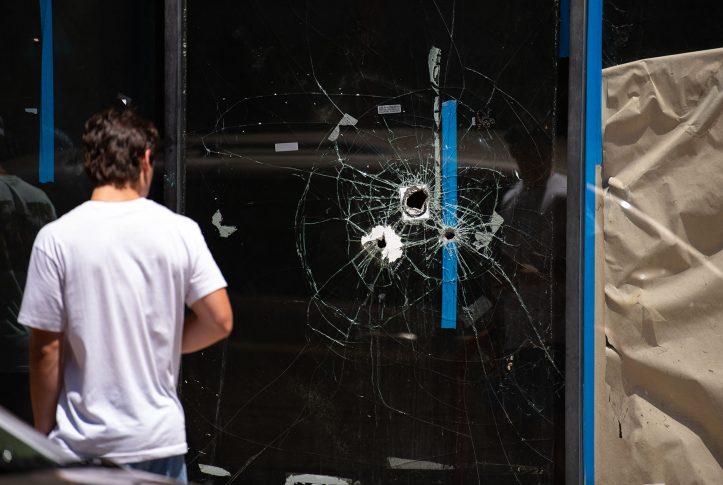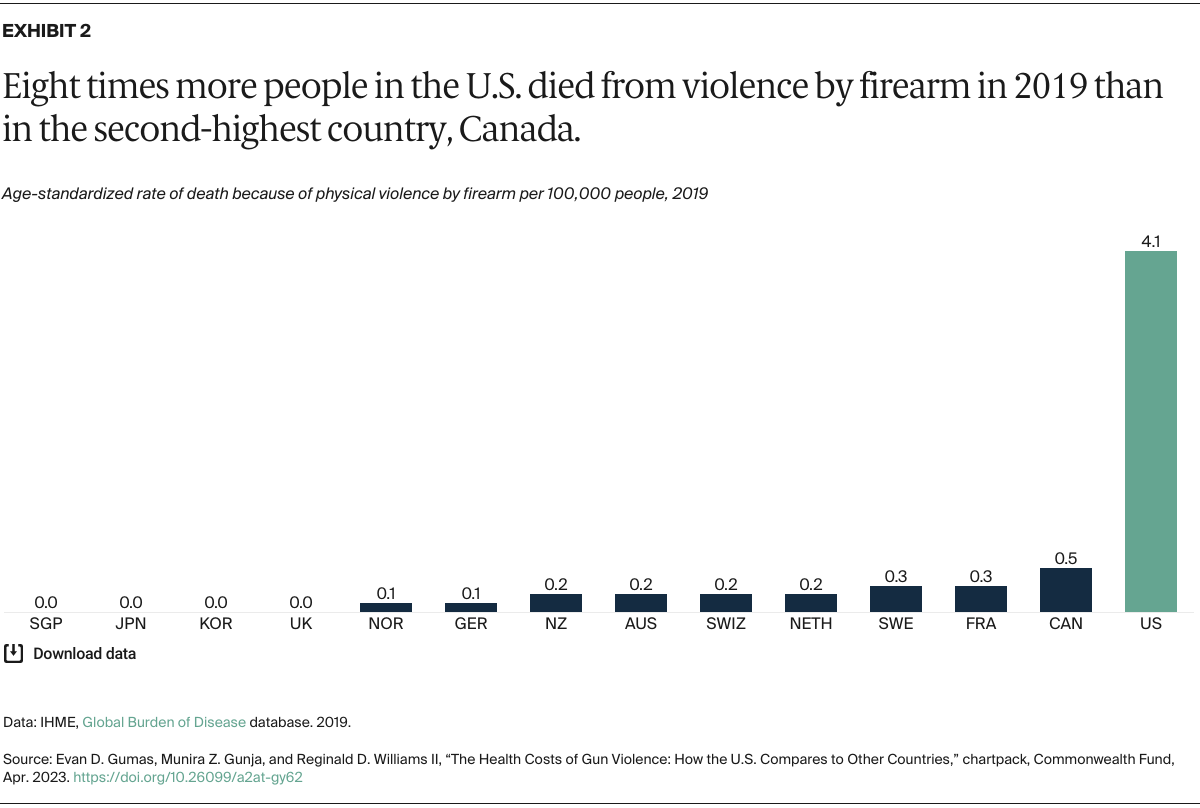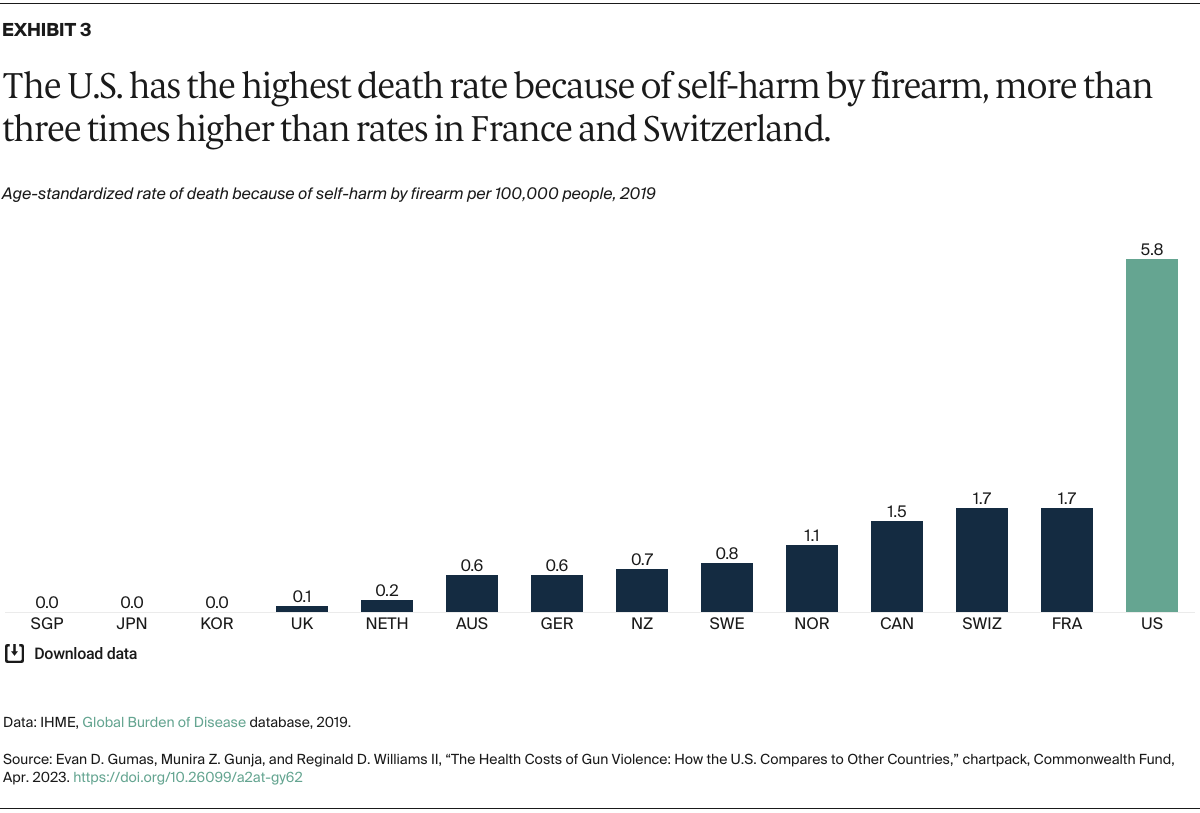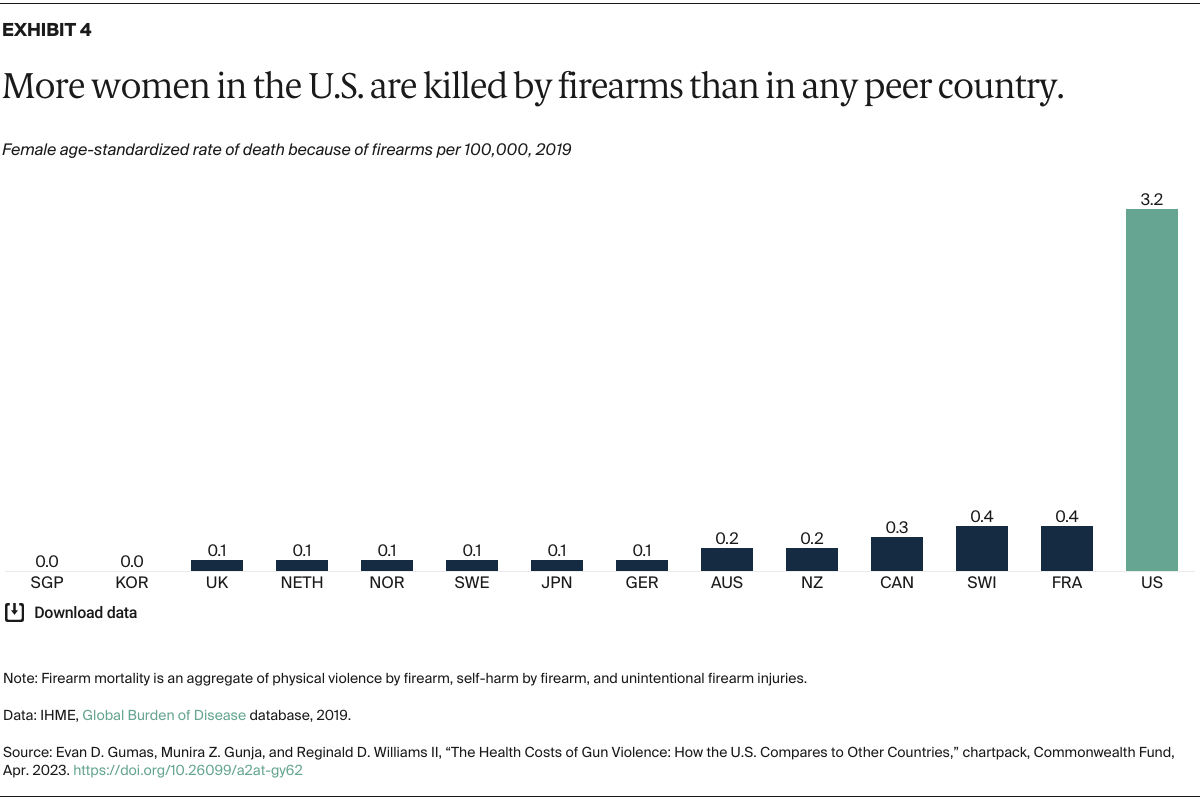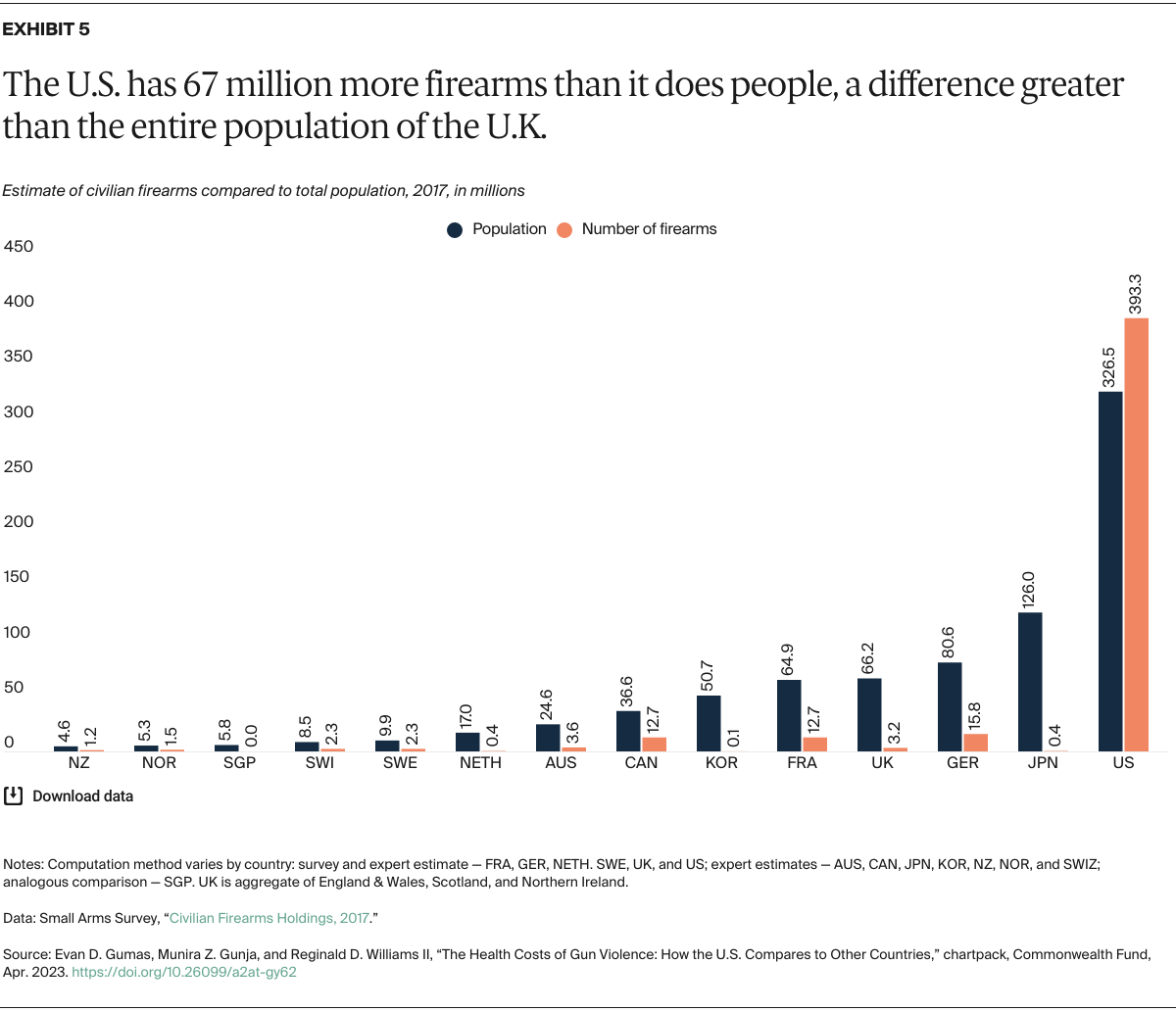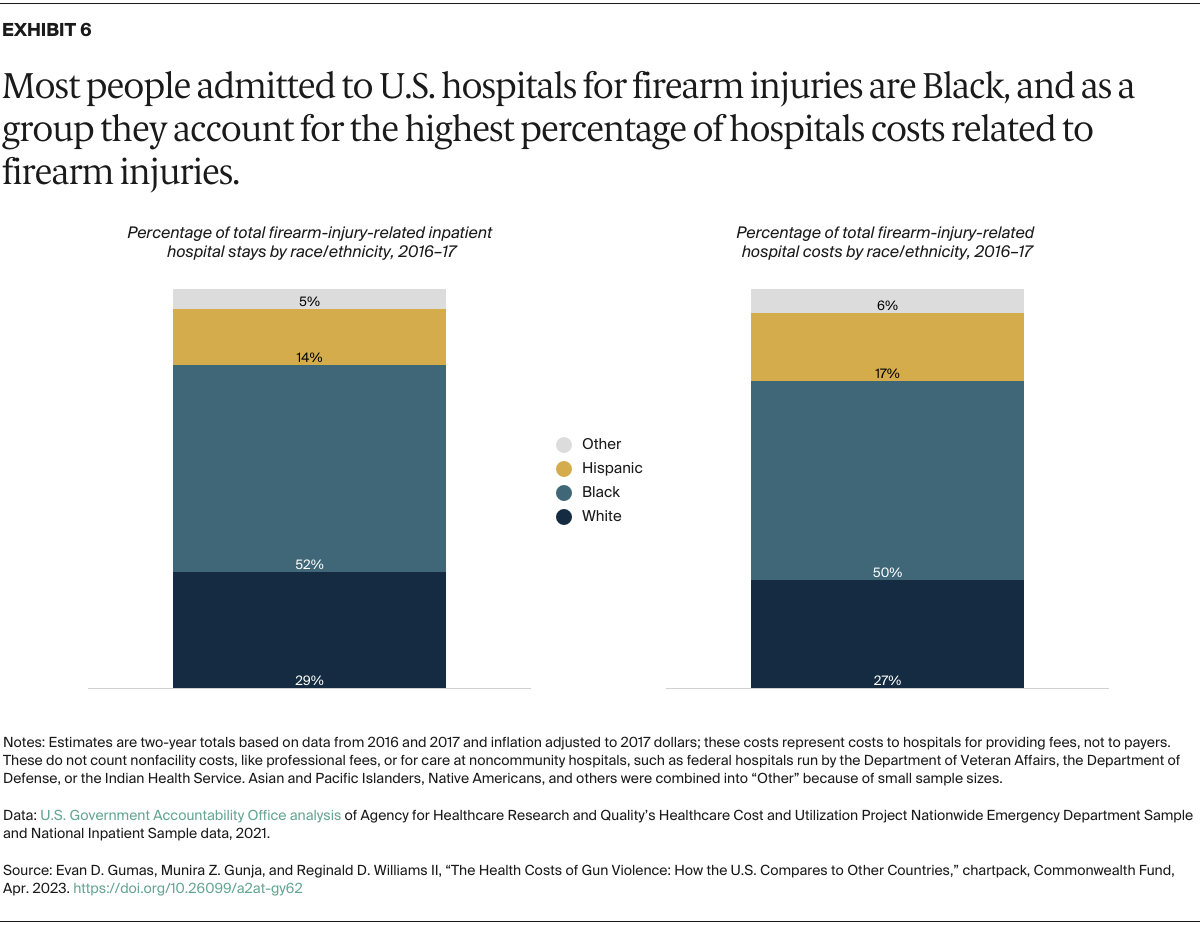Firearm mortality in the United States has been well documented, and for good reason: far more Americans die of firearm-related causes than do residents of any other high-income country. Firearms are the leading cause of death for children in the U.S. and the weapon used most in interpersonal violence against women.
The Centers for Disease Control and Prevention (CDC) estimates that nearly 49,000 Americans died from firearm-related causes in 2021, up from about 45,000 in 2020.1 In 2019, firearms accounted for 10.4 deaths for every 100,000 people in the U.S., around five times greater than in the countries with the second- and third-highest death rates, France (2.2) and Switzerland (2.1).
Less publicized, however, is how gun violence burdens the health care system. Each year in the U.S., firearm-related injuries lead to roughly 30,000 inpatient hospital stays and 50,000 emergency room visits, generating more than $1 billion in initial medical costs. In 2020 alone, deaths from these injuries cost $290 million, an average of $6,400 per patient. Medicaid and other public insurance programs absorbed most of these costs.
But the impact of gun violence reaches far beyond the hospital room. Firearm injuries leave victims with hefty medical bills. Medical spending increases an average of $2,495 per person per month in the year following the injury. Survivors are also more likely to develop mental health conditions and substance use disorders, areas in which the U.S. has poor outcomes.
In the following seven charts, we illustrate how gun violence affects Americans compared to people in 13 other high-income countries. The data are drawn from the Institute for Health Metrics and Evaluation’s (IHME) Global Burden of Disease database, the Small Arms Survey’s Global Firearms Holdings database, and the U.S. Government Accountability Office’s Firearm Injuries: Health Care Service Needs and Costs report (see “Data Sources and Methods” for details).
